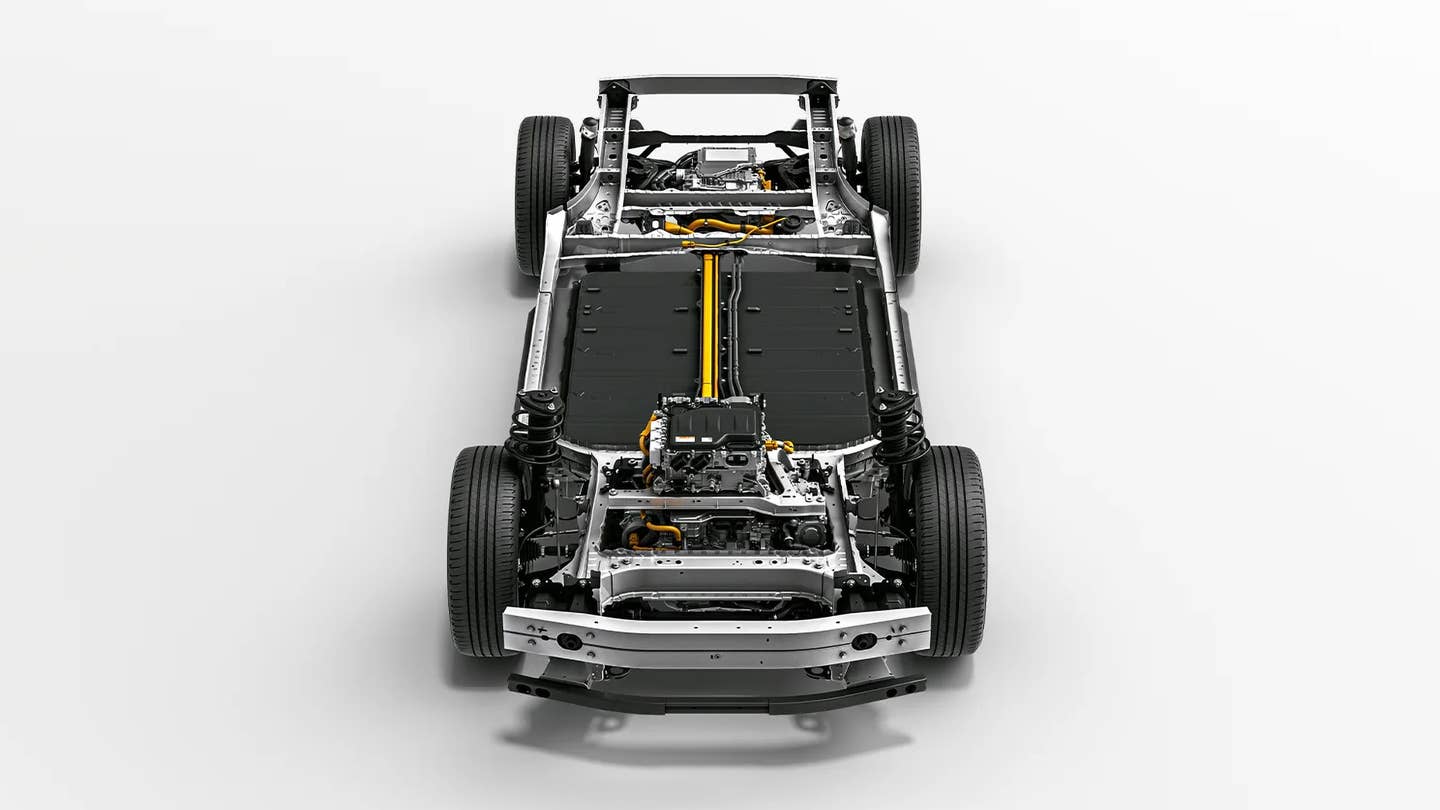You May Be Able to Repair Your Future EV’s Battery Just by Resting It
Researchers have discovered a potential solution for a flaw plaguing the energy-dense, lightweight batteries of the future.

Lithium-metal batteries aren't used in electric and hybrid vehicles yet, even though they offer higher energy density and lighter weight than their lithium-ion counterparts. Despite these advantages, lithium-metal chemistry has a flaw: it rapidly degrades after just a few charge cycles, reducing its viability as an option for production EVs. However, a new study from Stanford University finds that simply resting the batteries could reverse degradation quickly enough to make them viable options in the real world. I've never related to batteries more than I do right now.
The main difference between a lithium-metal battery and a lithium-ion battery has to do with the anode. A standard lithium-ion battery—the same kind you'll find in your average EV—has a graphite anode, a lithium metal-oxide cathode, and a liquid electrolyte sandwiched in between them. Lithium-ions are sent back and forth, through the electrolyte, between the anode and cathode.
However, lithium-metal batteries replace the graphite anode with electroplated lithium metal, which is lighter and allows for double the energy storage in the same amount of space. "A car equipped with a lithium-metal battery would have twice the range of a lithium-ion vehicle of equal size—600 miles per charge versus 300 miles, for example," said co-lead author Philaphon Sayavong, a PhD student in chemistry. That doubled range is thanks to both its increased energy density and lighter weight.
The downside is that, as the lithium ions pass from the metal anode to the cathode, some of those ions get trapped in the solid electrolyte interphase (SEI), which is like a spongy matrix where the anode and electrolyte meet. "The SEI matrix is essentially decomposed electrolyte," said fellow co-lead author Wenbo Zhang, Stanford PhD student in materials science and engineering. "It surrounds isolated pieces of lithium metal stripped from the anode and prevents them from participating in any electrochemical reactions. For that reason, we consider isolated lithium dead."
In layman's terms, repeated charging and discharging of a lithium-metal battery can quickly degrade its available capacity and total range. But researchers at Stanford found that when completely discharged, without any current running through it, a lithium-metal battery will actually begin to heal itself, in a sense. It doesn't take long, either. Resting the battery for just an hour will begin the healing process.
"We found that if the battery rests in the discharged state for just one hour, some of the SEI matrix surrounding the dead lithium dissolves away," Sayavong said. "So when you recharge the battery, the dead lithium will reconnect with the anode, because there’s less solid mass getting in the way."
It isn't practical to rest a car's battery for several hours to let it heal, but since battery packs are made up of hundreds or even thousands of individual cells, battery management software can be tweaked to allow for some cells to be fully discharged and rested while the others are used. Additionally, if you know you aren't going to use your car for a day or more—maybe you're taking a long trip in a different car or staying home from work—you can schedule your car to rest its battery. Such resting would take no further investment into lithium-metal batteries than simply writing the battery management software code.
It's also worth noting that this behavior is exclusively beneficial to lithium-metal batteries. Trying this with an existing EV, your smartphone, or frankly anything that utilizes conventional lithium-ion batteries is a great way to quickly shorten overall lifespan, because lithium-ion chemistry doesn't fare well being fully discharged or charged.
More work is needed to flesh out how to make lithium-metal batteries, and their resting procedure, viable for road car usage. But Zhang seems to think that, using this technique, these longer range, lighter weight, faster charging batteries could be useful in road cars in the future.
"We believe that in certain types of lithium-metal batteries, discharged-state resting alone can increase EV cycle life significantly."
Got tips? Send 'em to tips@thedrive.com
